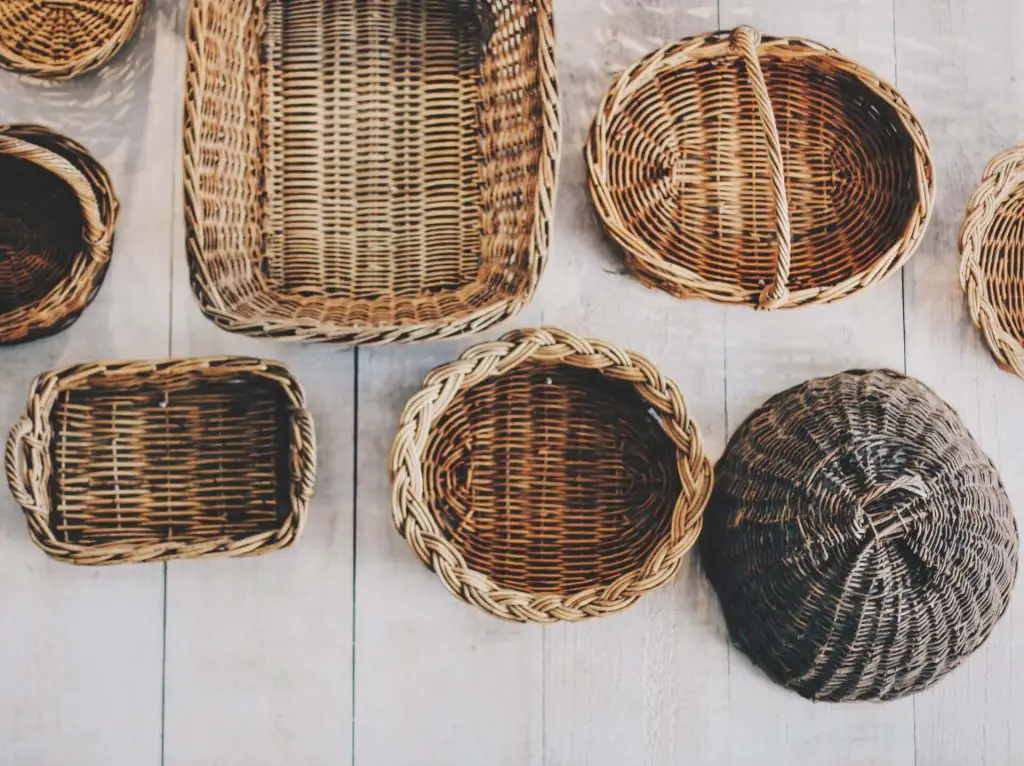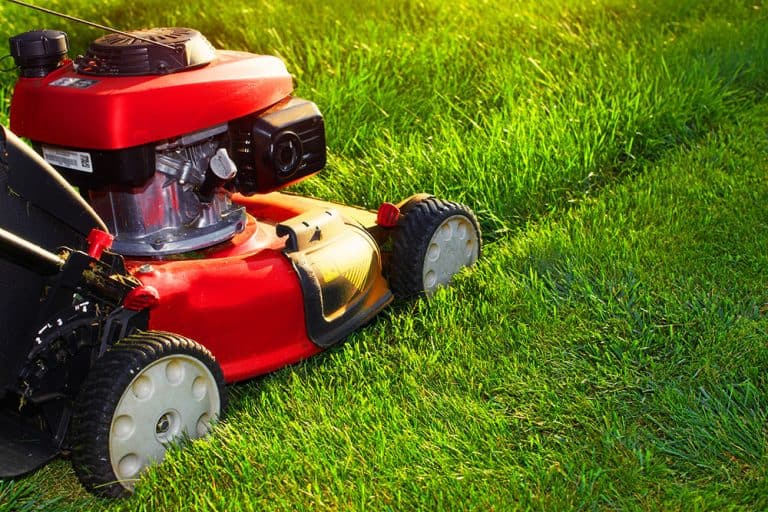How To Dry Willow Branches The RIGHT Way
Do you want to know how to dry willow branches the correct way?
Here is a quick and easy guide on how to dry willow branches properly to use them for your crafts and garden.
Willows are trees and shrubs that grow near water and can be found near cold and moist areas. With more than 400 species of willows, willow wood is used widely in making crafts, wreaths, furniture, tools, and even paper!
If you’re new to the world of willow, or perhaps you’re a newbie when it comes to willow wood, don’t worry; we’ve got you covered. Here is everything you need to know about drying willow branches.
At a glance, we will be looking at:
- How To Dry Pussy Willow Branches?
- The Air-Dry Method
- The Fan-Dry Or Heater Method
- Use Silica Gel
- How Do You Store Dry Willow Branches?
- Common Species Of Willow To Grow Near Your House
- Harvesting Willow Branches
- How Do You Preserve A Willow Branch With Leaves?
- Preserve With Glycerin
- Preserve With Resin
- Preserve With Preservative Spray

Affiliate Link Disclosure
Some of the links here are affiliate links, and I may earn if you click on them, AT NO EXTRA cost to you. I hope you find the information here useful! Thanks!
Related Posts
- How To Preserve Willow Branches [2022 Guide]
- How To Treat Untreated Wood For Outdoor Use [2022 Guide]
- How Often To Water Ferns Outside [+Growing Tips!]
- 27 Plants That Don’t Lose Leaves In Winter! +Growing Tips [2023]
How To Dry Pussy Willow Branches?
If you have a pussy willow tree and wondered how to dry pussy willows, don’t worry, as all the methods below can be used to dry pussy willows.
Let us go through each method one by one.
1. The Air-Dry Method
Sort your willow branches accordingly before you proceed to air-dry them.
Start from the tallest willow branches. Shake the bundle of willow branches, so the short branches fall on the ground. Bundle the long willow branches together.
Repeat the process until all the willow branches are sorted accordingly.
Place your willow branches on a clean surface in your shed or out open in the fields. Make sure no wild animals will disturb the bundles; if not, place them in barrels or cardboard boxes to keep them in place.
After that, just let nature do its work!
The sun and wind will dry the willow branches naturally. Rotate your branches every now and then to ensure that they dry evenly.
If you’re staying in a rainy climate, you can also dry them indoors as air circulation will dry the willow naturally. Otherwise, you can also refer to the fan/heater and silica gel methods below.
This method will work perfectly for straight willow branches. But if you have curly willow trees, you might wonder how to dry curly willow branches instead.
For curly willow, you do not need to sort them first, as you can dry them directly by placing them in a box or a vase.
If you’re creating artwork from curly willow branches, bend and twist your willow branches to the desired shape while the wood is green. Then place it in a cool and dry spot.
The amount of time needed to dry the willow branch will depend on the wood’s humidity level, harvesting period, and amount of sap. This will take any time from 2 weeks to 1 month.
2. The Fan-Dry Or Heater Method
This method is similar to the air-drying method but is much quicker. This method is also better for those who stay in a rainy climate where direct sunlight is scarce.

Place the willow branches in front of a fan or heater. If you have an industrial fan, use that instead. Alternatively, you can also place the branches near the fireplace. Try not to place them too near to the fireplace, or they might crack.
3. Use Silica Gel
Another way of drying the willow branches is to use silica gel. Silica gel removes moisture from the willow quickly to stop the branches from rotting.
Also, if you’re drying colored willow, such as the golden willow and the violet willow, drying with silica gel helps lock in the glorious color of the willow so you can weave beautiful crafts with the willow’s natural color.
- Step 1: In an airtight container, pour a layer of silica gel about 1.5 inches thick.
- Step 2: Place the willow branch in the container and add more silica gel until the willow is partially submerged.
- Step 3: Close the lid and leave to dry out completely.
Depending on the size, length, and variety of willow, it will take up to 1-2 weeks for the willow branch to dry completely.
#Tip: Even though silica gel is non-toxic, fine dust might be created when you handle the silica gel. I recommend wearing a mask so you won’t inhale the fine particles of the silica gel.
How Do You Store Dry Willow Branches?
If you’re planting, harvesting, and drying willow yourself, you definitely wouldn’t want to be caught in a situation where your willow sprouts or rots before using it in your crafts.
To ensure your dried willow retains its favorable condition, add latex paint and water in a container in a 1:1 ratio.
Then, dip the ends of the willow branches in the latex paint-water mixture. This will help prevent willow branches from cracking.
You can store the dried willow in a dark and cool location, away from the wind and sun. Remember to cut off the moldy and sprouted parts of the willow before using it.
Common Species Of Willow To Grow Near Your House
1. White Willow (Salix Alba)
Salix alba is also known as the white willow due to its hairy and silvery-white leaves. The stems are commonly used in weaving crafts, wreaths, and baskets. If you’re planning to grow it, be sure to plant it in a large space as it’s a huge and fast-growing tree.
Native Area: Western and Central Asia, Europe
Height: 50 to 100 feet
Sun Exposure: Full sun to part shade

2. Goat/ Pussy Willow (Salix Caprea)
Usually grown as a filler plant, the goat willow is a heavy-leafed tree with attractive-looking flowers that look like cat paws.
If you’re planning to plant it, take note that both a male and female plant is needed for proper pollination as goat willow does not grow easily from cuttings.
Native Area: Western and Central Asia, Europe
Height: 12 to 30 feet
Sun Exposure: Full sun to part shade

3. Weeping Willow (Salix Babylonica)
Scientifically known as salix babylonica, the weeping willow is most probably what people imagine when they picture a willow tree.
Commonly used in landscaping, the weeping willow is planted alongside streams and has bright yellow-green leaves during the spring and darker, almost greyish green leaves during the winter.
If you’re planning to grow weeping willow, do note that it grows best in damp soils, especially near ponds, rivers, and lakes.
The roots may be spread wide to look for hydration, so plant them in a vast and spacious area near the water.
- Native Area: Northern China
- Height: 35 to 50 feet
- Sun Exposure: Full sun

Harvesting Willow Branches
If you plant your own willow, you might be wondering when is a good time to harvest your willow branches for crafts. Willow is usually harvested during the dormant season between leaf fall and regrowth.
Use sharp hand shears or a hand saw and cut the branches as close to the original stem as possible.
This prevents young willow plants from uprooting. During the first year, your willow plant may have only small stems, which might not be enough for basket weaving.
Fret not as planting the cut stems can expand your willow plantation. For smaller willow shrubs such as the goat willow, bebb willow, and the narrow-leaf willow, cut off stems of around ½ to 1¼ inches in diameter.
For larger willow trees, such as the white willow and the weeping willow, you may choose stems of around 1 to 3 inches in diameter.
Finally, bundle and sort the cuttings by their size, date, and variety.
Ultimately, it depends on the purpose of harvesting, as some dried willow branches are used to weave baskets while some are used to make furniture.
- Tip 1: Remember I mentioned using a sharp hand shear to cut the branches? The willow branch will be damaged if you use a dull hand shear, allowing disease to infect the bark and reduce your willow population.
Use a tool sharpener to sharpen your shears before using them, and always make sure your shears are clean before you harvest your willow.
- Tip 2: If you are harvesting willow from big willow trees such as the weeping willow and white willow, be careful when you’re using the ladder. Since willow grows near water, the ground around the tree might be soft.
How Do You Preserve A Willow Branch With Leaves?
Willow branches are commonly preserved without leaves. However, some projects might use willow branches with leaves. Here is how to preserve curly willow branches and pussy willow branches with leaves.
Right below the leaf, snip off the branch at 45 degrees. Then place it in a cool and dry area to allow air circulation. The air circulation will remove moisture from the willow and dry it completely for your crafts.
1. Preserve With Glycerin
- Step 1. In a 1:2 ratio, add the glycerin to warm water and combine the mixture thoroughly. Don’t worry if the mixture turns cloudy. It will turn clear again once it’s thoroughly mixed.
- Step 2. Mix the solution with latex paint in a 1:1 ratio in a spray bottle. Then spray it all over the willow branches.
Depending on the color of your willow, add some food coloring to the mixture to maintain the shade of the willow during the process.
- Tip: Besides spraying, you can also preserve your willow by submerging the branches completely in glycerin. The glycerin will replace the moisture in the cellulose by osmosis, thus preserving the branch beautifully.

2. Preserve With Resin
- Step 1. In a 1:2 ratio, add the resin to the water and combine the mixture thoroughly.
- Step 2. Fill the mixture in a silicone mold. Before doing this, make sure there’s no dirt in your mold. Alternatively, you could wipe your molds with alcohol so there wouldn’t be any bacteria allowed to grow in the molds.
- Step 3. Pour a thin layer of the resin-water mixture into the molds.
- Step 4. Blowtorch the first layer to remove the bubbles that could be caught in the first layer of resin.
- Step 5. Layer your willow branches in the mixture and leave the molds to dry for 24 hours.
Oh, and here’s my choice for the resin kit I use for my crafts and work.
3. Preserve With Preservative Spray
Spray the willow branches with a preservative spray. Alternatively, you can spray the willow with some polyurethane varnish.
And this is how to preserve willow tree branches! For more comprehensive information, see my article on How To Preserve Willow Branches [2022 Guide].
FAQs On Drying Willow Branches
How Long Does It Take To Dry Willow Branches?
If you’re wondering how long does it take to dry willow branches, 6 weeks is optimal as the willow branch is still pliable, making it ideal for making things out of it.
Do note that if you weave with freshly cut willow, the weaving will loosen, and gaps will form as the willow branch dries and shrinks.
What Can I Make With Willow Branches?
So, you’re probably thinking – what can I make with willow branches? Well, you can make vases, mats, chairs, baskets, and many other decorative or useful items from willow branches.
Decorative items made with willow branches can lend an earthy and minimalistic vibe to your home. Remember to strip the branches from their leaves before weaving.
What Do You Do With Cut Willow Branches?
What do you do with cut willow branches if you’ve managed to get your hands on a ton of them?
Well, you could plant your new tree outdoors with willow branches alone! Cut a willow branch about 10-inches long and the diameter of a pencil.
Then, place the cutting in water. You can plant the willow branch outside when roots form in the water!

Conclusion
Well, that’s all about how to dry willow branches! I hope you learn a lot from here.
Ultimately, there are really no hard and fast rules in drying willow branches. Different drying methods will yield different results as well as varied drying times. Who knows, you might just find the best method to dry willow among the recommended methods above by trial and error!
Try using your sense of touch to determine if the willow branches are dry enough.
Be patient as it takes time and experience to learn to know when the willow branches are ready for use.
Good luck!
Related Posts






![How To Harvest Kale Without Killing The Plant [What to Avoid!] 2023](https://aboveandbeyondgardening.com/wp-content/uploads/2022/10/how-to-harvest-kale-without-killing-the-plant-1-768x512.jpg)

![How Often To Water Ferns Outside [+Growing Tips!]](https://aboveandbeyondgardening.com/wp-content/uploads/2021/10/How-Often-To-Water-Ferns-Outside-768x512.jpg)
![Why Is My Bamboo Turning Yellow? [And How To Fix It!]](https://aboveandbeyondgardening.com/wp-content/uploads/2021/10/Why-Is-My-Bamboo-Turning-Yellow-768x512.jpg)

![11 Best Companion Plants For Oregano & What To Avoid! [2023]](https://aboveandbeyondgardening.com/wp-content/uploads/2022/11/companion-plants-for-oregano-768x512.jpg)